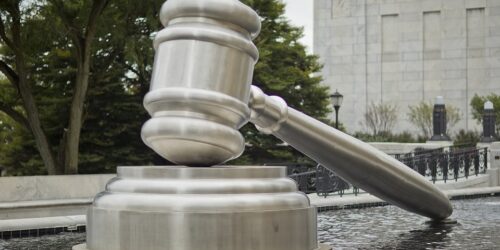The most effective way to learn how to analyze any subject is through the “case method.” This is used almost exclusively in law schools to teach people how to be lawyers although the use of the case method does spill over into other disciplines and professions. In law schools, the case method has evolved because of the complex and extensive nature of the world’s legal systems. Learning through the case method is extremely time-consuming and challenging.
Becoming a good genealogist is very similar to becoming a good lawyer (attorney). Both law and genealogy take a significant amount of time and effort. Essentially, the case method of teaching law involves studying thousands of legal cases using a structured series of questions. Learning by the case method in genealogy involves looking a hundreds of thousands of records and applying the information gleaned from those records to thousands of individuals and families. In this blog post series, I am not going to look at thousands of documents and cases, but I will look at enough to give you an idea of the structure of the questions and how the answers to those questions as they are applied to individual classes of records and documents help you to evaluate the resultant information.
Here we go with the first “case” or record. This is a copy of a page from the 1880 U.S. Federal Census. Usually, I am searching census records for information about specific individuals and families. However, for the purpose of illustrating how to begin to analyze this and other records, I do not yet need to focus on any specific individual or family. I can analyze the record without extracting any particular information. Here is the record.
I chose to start with a US Federal Census record because census records will likely be the most familiar to anyone in any level of expertise. Here are the first two of many questions.
What is the geographic location of this record? What was the Census date of this record? Here is a screenshot of the pertinent part of the record.
Note: You can click on any image to see an enlarged version.
You can answer both questions by looking at the information indicated by the 5 arrows. It may seem like a good idea just to dive into the record and start copying out the information but, in the case of U.S. Federal Census records, it is a really good idea to make sure you understand the content and history of census records before you make assumptions about the information that may or may not be valid. When I first started researching, almost 40 years ago, I had only some very vague knowledge about the U.S. Census records. At that time, the records were only available in a few locations on microfilm and the main index to the records was the Soundex system of indexing. The ease of searching and extracting information from those same online census records today obscures the need to understand the records.
I would start by reading and studying the extensive explanation and history of the U.S. Census on the National Archives website. See Census Records. One note about the comments made by the U.S. Census records as presented on the National Archives website is that the National Archives fails to tell you about important online sources where the Census records are available for free. For example, they mention their “digitization partners” Ancestry.com and FamilySearch.org (Fold3.com is owned by Ancestry.com) but they do not point out that Ancestry.com (Fold3.com) is a subscription website and that FamilySearch.org is free. They also fail to mention that a free copy of the entire census is also available on the Internet Archive or Archive.org.
It may seem obvious but before you can analyze a document or record, you need to be able to access the record.
You can find a step-by-step tutorial about the U.S. Census in The Family History Guide. See Census Records. Here are some additional books and publications that will help with understanding the U.S. Census records.
Now, back to the particular census record shown above. The location information is specific as to the town and county of residence of the people on this page but as we shall see, the location information is even more specific. But look at the date. Does this mean that the census enumerator counted these people on the 7th day of June of 1880? Here is an explanation from Ancestry.com about the date of the 1880 Census:
The 1880 census began on 1 June 1880 for the general population of the United States. The enumeration was to be completed within thirty days, or two weeks for communities with populations of 10,000 or fewer. Regardless of when an individual was contacted, all responses were to reflect the status of the individual as of 1 June 1880, the official Census Day.
So, what does it mean when the record shows that the date was June 7, 1880? this is the type of question that needs asking but is only pertinent if one or more of the people enumerated had birthdays after June1st because the age information given by the census was recorded as of June 1.
This is only a very basic example of the way I will proceed to analyze these documents so stay tuned.
For the first part of this series see the following:
Part One: https://genealogysstar.blogspot.com/2020/04/how-to-analyze-genealogical-sources.html








